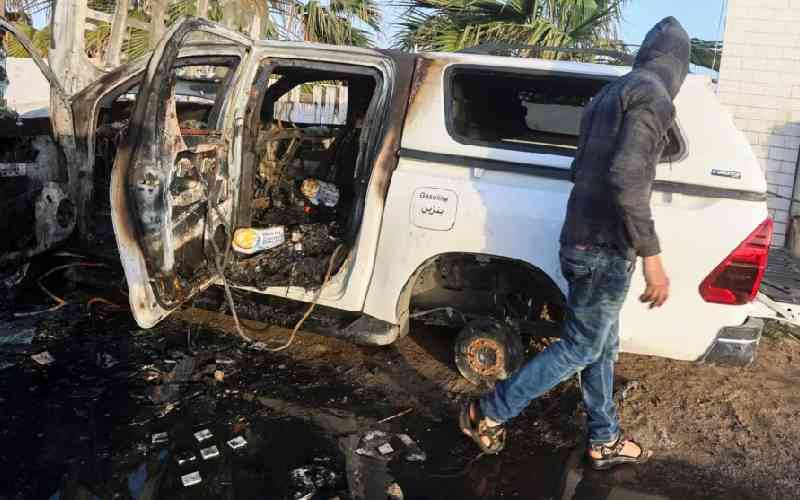By Charles Kanjama
Almost one year ago, on January 23, 2012, Pre-Trial Chamber II of the International Criminal Court (ICC) confirmed the charges of international crimes against Uhuru Kenyatta, William Ruto, Francis Muthaura, and Joshua Sang.
The charges against Henry Kosgey and Hussein Ali were dismissed. Save for Sang and Ali, the rest had been charged as indirect co-perpetrators.
It is a fundamental tenet of criminal law that one cannot be convicted of an offence unless he engaged in a guilty act (‘actus reus’) and did so with a guilty intention (‘mens rea’), save for a few strict liability offences where mens rea need not be proven.
One who commits a crime personally is called a direct perpetrator. One who commits a crime in concert with another is a joint perpetrator. Joint perpetrators must have a common or shared intent to be held guilty of the crime. This is the horizontal axis of criminal responsibility.
Under the Rome Statute, it is also possible to have criminal responsibility for an action through the vertical axis, namely perpetration through another person. In this case, the prosecutor has to prove that the principal perpetrator exercised direct influence or control over the physical perpetrator, who therefore acted as his agent. A fourth form of perpetration had been proposed under international law, namely indirect co-perpetration, or criminal responsibility along the diagonal axis. This form of perpetration is not expressly provided for under the Rome Statute but was considered a logical development of the previous two forms.
It meant that a party who neither shared a common intent (the subjective test) nor exercised direct control over the physical perpetrator (the control test) might still be held to be criminally responsible via an objective test. This test would apply so long as there was a common plan with a risk of criminality (for example, ‘mass action’ or ‘self defence’) and control over an organisation whose members engaged in criminal activity.
Thus in the case of Ruto, the ICC Prosecutor Luis Moreno-Ocampo came up with a theory that Ruto headed “the organisation” which included a cultural element (the Kalenjin community), a military wing (three specifically-named commanders) and a propaganda wing (which Joshua Sang was part of).
And in the case of Uhuru, Ocampo came up with a theory that he headed an organisation which included a military arm (Mungiki, led by Maina Njenga), a financial arm (which financed their operations) and an operational arm (which included Kenya Police, co-ordinated by Ali and Muthaura).
The Defence challenged this theory and claimed that the alleged organisations were a figment of Ocampo’s imagination.
The Defence also challenged the theory of indirect co-perpetration as inconsistent with the text of article 25(3) (a) of the Rome Statute. In response, the Pre-trial Chamber affirmed that the Rome Statute provided for indirect co-perpetration or joint commission of a crime through another person. They relied on a previous decision of the Pre-trial Chamber in The Prosecutor v Germain Katanga and Mathieu Ngudjolo Chui as authority for that proposition.
One of the judges, Christine Van Den Wyngaert, gave a separate concurring opinion where she trashed the tenuous concept of indirect co-perpetration. “I disagree that Article 25(3) of the Statute adopts the control over the crime doctrine. In particular, I do not accept that a contribution to a non-criminal plan with a risk of criminality can be the basis for conviction... [or] that perpetration through another person can be equated to control over an organisation [or that] “indirect co-perpetration” has any legal basis in the Statute.”
What does this mean for the Kenya ICC cases? Judge Wngaert is one of the three trial judges. The confirmation of charges against Uhuru, Ruto and Muthaura explicitly relied on the notion of indirect co-perpetration. If ICC was a normal criminal court, it would mean that the Kenyan Case would be dismissed or the charges withdrawn by the Prosecutor. As it is, we don’t know.
The writer is an Advocate of the High Court
Stay informed. Subscribe to our newsletter
 The Standard Group Plc is a
multi-media organization with investments in media platforms spanning newspaper
print operations, television, radio broadcasting, digital and online services. The
Standard Group is recognized as a leading multi-media house in Kenya with a key
influence in matters of national and international interest.
The Standard Group Plc is a
multi-media organization with investments in media platforms spanning newspaper
print operations, television, radio broadcasting, digital and online services. The
Standard Group is recognized as a leading multi-media house in Kenya with a key
influence in matters of national and international interest.
 The Standard Group Plc is a
multi-media organization with investments in media platforms spanning newspaper
print operations, television, radio broadcasting, digital and online services. The
Standard Group is recognized as a leading multi-media house in Kenya with a key
influence in matters of national and international interest.
The Standard Group Plc is a
multi-media organization with investments in media platforms spanning newspaper
print operations, television, radio broadcasting, digital and online services. The
Standard Group is recognized as a leading multi-media house in Kenya with a key
influence in matters of national and international interest.








